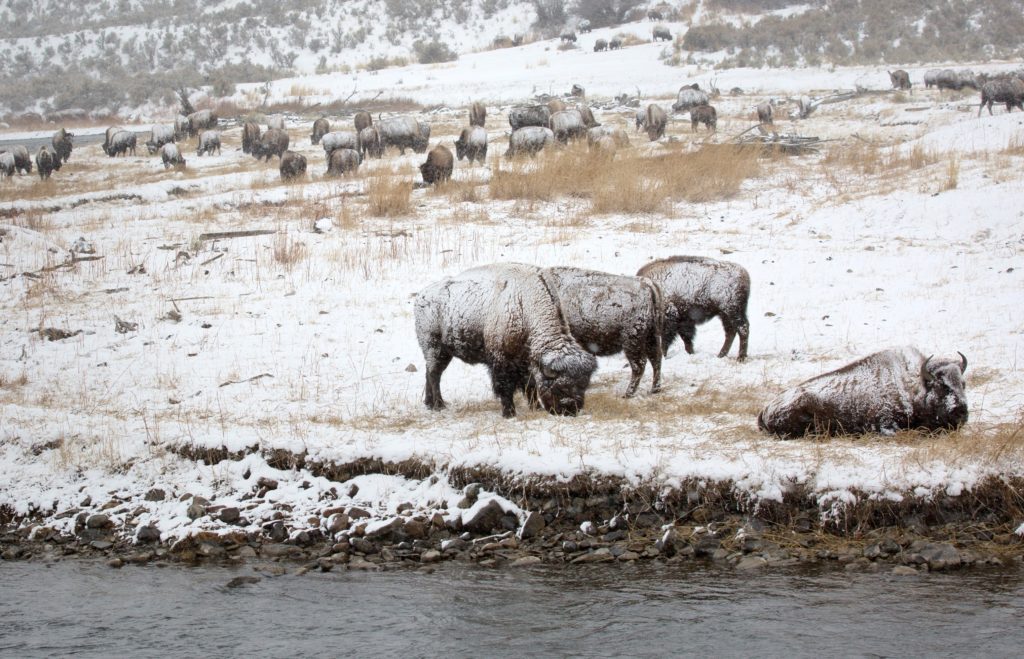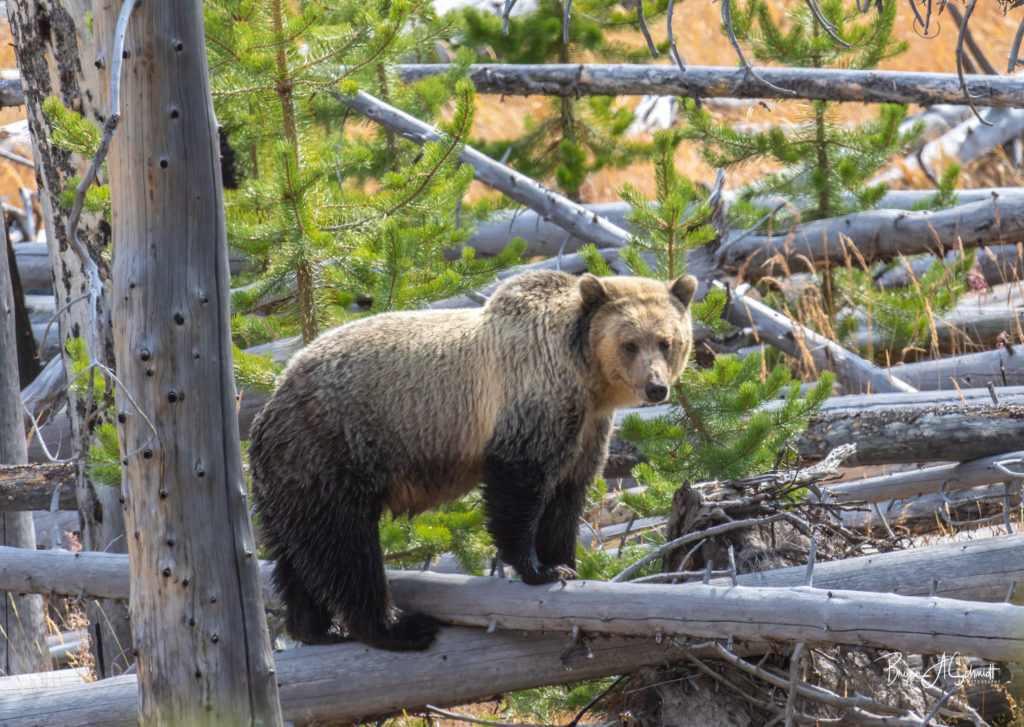“What’s absent, I mentioned to the students, is a chronicle of the seasonal migrations and movements of several other species, as in: bison, mule deer, pronghorn, moose, bighorn sheep, and wolverines. All of these animals migrate, too, and they need spaces and habitat not fragmented or overrun by humans in order to keep doing it. Grizzlies and wolves peregrinate too, as do bald eagles, peregrine falcons, trumpeter swans, sandhill cranes, bobcats, lynx, and wild neotropical songbirds. Greater Yellowstone is a vast remnant symphony of wildlife whose movements are like the melody articulated by notes scrawled across a beautiful, complicated, harmonious masterpiece of sheet music.This is the reason why Greater Yellowstone warrants rough comparison to the other great wild ecosystem, the Serengeti, in East Africa. This is our still living, breathing version of that. Other regions can only dream of bringing back species that have been lost and some will spend millions of dollars trying to recover them and never succeed. Greater Yellowstone is the only one of its kind on the planet and it is every bit as valuable a national treasure as anything else in this country. Yet by neglect, indifference, lack of mass awareness of what we have right before our eyes—and add to that a fragmented way of thinking about it—we are losing this place.” – Todd Wilkinson, Mountain Journal
The incredible growth and development happening around Yellowstone and Grand Teton National Parks and the surrounding wilderness are astounding. Our family has been traveling to these national parks for the last 17 years regularly and we have seen it happening with our own eyes. We have spent weeks in winter there in the past where hardly anyone is around and now the park sees more and more people each winter, and our quiet places of solitude are getting more crowded as others discover the beauty of winter in Yellowstone. Summers are insane and it is hard to even maneuver through the park between breakfast and dinner hours. We rarely visit during the summer months anymore. Mountain Journal has published some incredible articles and pieces on what is happening in the parks and the growing cities and areas surrounding this ecosystem such as Bozeman, MT, Jackson, WY, and the Teton Valley, ID region. The threats that this rapid population growth brings to this larger ecosystem are astonishing. The purpose of this post is to mainly highlight what Mountain Journal is doing, so please see the articles I linked to at the end of this post. I would also encourage anyone who cares about, travels and/or photographs in these parks to please consider donating to this amazing non-profit organization. It is the only one I have found that is keeping us very informed of the urbanization and growth surrounding these still-pristine parks.
 Bison in a February blizzard and -27 degrees
Bison in a February blizzard and -27 degrees
While protecting species within park boundaries is critical, one of the things we don’t hear as much about is the importance of wildlife corridors. Wildlife corridors are those open areas or small parcels of natural habitats that connect the larger ecosystems where our wildlife live. They provide a way through more developed areas and roads and highways for the animals to migrate through. Sometimes this is for migration from their winter grounds to summer locations, and for predators, it allows them to circulate and find their own territories with connection to their species for breeding as well. This is just my definition and I am sure there are much better ones if you would like to research more. Wildlife Corridors allow for wildlife to move from place to place and not get trapped in one wilderness area surrounded by growth and development.
Back in the day when I worked for environmental organizations, we focused on this issue quite a bit as we worked on how to allow for development while providing protection and corridors for endangered species in southern California. This issue has remained a very important one for me and when I read more about the migration paths and need to protect remaining corridors, I knew I wanted to share about it. Rather than trying to summarize all that I have read, please check out these article by Todd Wilkerson, founder of Mountain Journal, for everything related to the issues of wildlife corridors, crowding and development in the Greater Yellowstone Ecosystem and how to save this “American Serengeti” that so many of us cherish. Let’s all educate ourselves more and determine how we can be a part of the solution in saving these incredible lands.
What’s Our Role in Saving Greater Yellowstone
Waiting For Elk To Disappear From ‘The Last Hundred Acres’
Unnatural Disaster: Will America’s Most Iconic Wild Ecosystem Be Lost To A Tidal Wave of People?
Bison in northern Yellowstone in a winter blizzard with -27 degrees temperature





